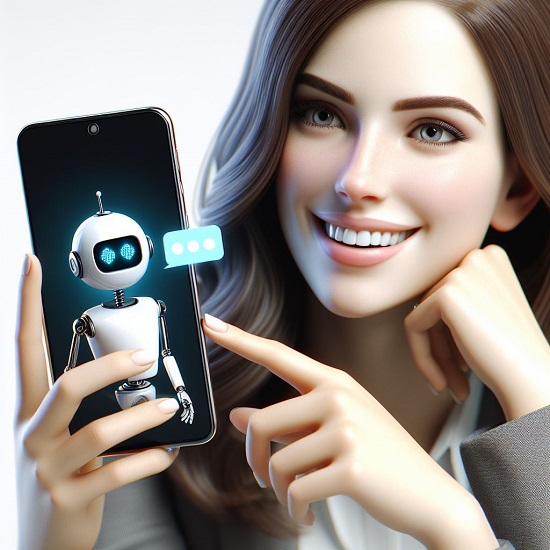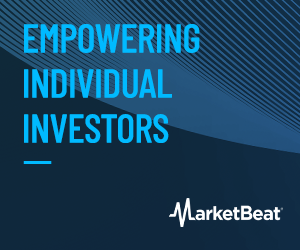
AI at Work: Balancing Innovation and Challenges
It’s been well over a decade since the team at Blend Interactive first used Artificial Intelligence, or AI.
Blend Interactive, a web strategy, design and development firm employing 25 people, started using AI as many businesses—and individuals—did, said Karla Santi, the firm’s CEO and founder.
“We’ve been using AI in some form for several years now, starting with rudimentary AI for search completion and results personalization by predicting keystrokes, words, products and phrases,” Santi said.
“We’ve been using content recommendations and personalization on websites for many years. It analyzes user behavior, preferences and past interactions to display personalized content and product recommendations.”
Whether we recognize it as AI or not, it is prevalent in our daily lives through voice assistants and smart home devices like Amazon’s Alexa, Apple’s Siri and Google Assistant. Smart homes and smartphones simplify people’s lives, Santi said. Thermostats learn to predict when residents are home or routinely away, and devices are given permission to listen to predict user preferences and estimate commute times.
But as AI becomes more ubiquitous, alarms have been sounded about the future, about the good and bad, the benefits and fearfulness of a world it seems to control.
Dr. José-Marie Griffiths describes AI simply as “a computer program that performs humanlike tasks.” She is president of Dakota State University in Madison, a school which states on its website that its online or on-campus courses have put AI at the core since the fall of 2021.
“Businesses are using AI in a number of ways,” Griffiths said. “It allows businesses to better interact with their customers, it allows them to plan resource allocations, it can make them more efficient. There are lots of special things—health care will have very different applications than financial services like banking.”
In and of itself AI is getting better and more efficient. As that happens, it will be applied more extensively in areas such as manufacturing, telecommunications, health care, retail and education. A recent Forbes magazine report showed the biggest spending in the United States comes in the retail sector, followed by telecommunications, Griffiths said. Both of those have a strong influence in South Dakota, she said.

AI will have an estimated 21% net increase on the United States GDP by 2030
AI is expected to see an annual growth rate of 37.3% from 2023 to 2030
A quarter of companies are adopting AI because of labor shortages
In May 2023, U.S. Senator Mike Rounds was named co-chair of a bipartisan AI working group to pursue the opportunities and tackle the threats presented by AI. The working group facilitated briefings to expand the Senate’s knowledge of AI. Last September, Rounds moderated a high-level discussion that featured top tech leaders such as Elon Musk, Mark Zuckerberg and Bill Gates.
Rounds compared the average person’s knowledge of AI to the watch they may be wearing on their wrist. The user doesn’t know how a watch works, he said. They just know how to tell time using it.
“AI will help people make decisions at a pace they never had in the past,” the senator said. “But wherever AI can be seen for a common good, we can use it as a threat to the public. I’m trying to make darn sure that the tools we’re going to need to defend countries against adversaries, that the American people will support the costs.”

Rounds, who says he is fascinated by AI, also concentrates on how it will improve the lives and businesses of the average South Dakota. Major financial services providers in South Dakota must continue to compete, using AI to speed up the decision-making process, he said.
“It impacts literally every single business you can imagine,” Rounds said. “Farming is a good example. You will use AI in the biology of creating better plants and the creation of genetic proposals for livestock. AI will be used to automate more of our transportation services. It doesn’t mean you will not have a pilot sitting in front of the airplane, but you will have a pilot with a lot more information at their fingertips.”
Regulation of AI will protect copyrights, patents and intellectual properties, Rounds said. In the future, AI will create its own databases without the help of people, analyzing open-source databases more quickly than an individual can.
Over 60% of business owners believe AI will improve customer relationships
Research estimates AI will create 97 million jobs
Over 60% of business owners say AI will increase productivity
Karen DeLange’s company, Alternative HR, assists businesses that don’t need a full-time human resource department through special projects or providing onsite assistance.
Alternative HR uses ChatGPT, a free-to-use AI system designed to “engage conversations, gain insights, automate tasks” for brainstorming innovative ideas, among other tasks.
“I may need a title for a workshop or say give me 10 ideas for such and such, then give me 50 more or 10 more,” said DeLange, director of operations and HR senior consultant.
“What we don’t use it for is, say, research and things like that. We have found that it has some errors. I can’t personally use it for ‘give us a policy for this’ or ‘give us an answer for that.’ I might use it to wordsmith. Personally, I use it a lot for writing … It will rewrite what I want to say in a clearer way.”
Alternative HR has experimented with other programs but has found ChatGPT easy to use. DeLange has led a company-wide workshop where employees download the program, then practice on it. She stresses to the inexperienced users that it’s important to write a good prompt that will help the ChatGPT share the most useful information.
There are cautions.
“You don’t want to rely on the information if you don’t know it to be true,” DeLange said. “It’s a tool like anything else. It makes us more effective; it makes us more efficient with our time. It may not be accurate … ChatGPT doesn’t give you sources. I think Microsoft does. I would still always check. You don’t know where the information comes from.”
Her field, human resources, relies on the personal touch, DeLange said. An AI tool like ChatGPT can’t replace that.
“It can take the busywork out of any job,” she said. “It can give me an itinerary for travel, but it can’t make decisions for me, it can’t give personal recommendations. The personal touch for us will always be there. We see that with young adults who spend a lot of time chatting online, then they get to work and they’re uncomfortable with conversation. You send an email; it creates friction because you can’t tell tone. You need people to communicate with each other.”
Blend Interactive tends to avoid being what Santi calls the bleeding edge of modern technologies while carefully adopting change as quickly as possible.
“We consider how adjusting our process or tools affects the team, work and clients,” she said. “We’ve put together policies on how and when to use AI, so we’re leading our efforts strategically yet excitedly.”
Santi has not found a specific percentage for how many web-development firms use AI. It varied widely based on factors such as the size of the firm, the project they undertake and their technological orientation.
“However, it’s clear that AI usage in web development is on the rise,” Santi said. “AI is increasingly being used for tasks like automated testing, personalized content creation, user experience optimization and even in some aspects of design and development through tools like AI-assisted coding. Larger firms or those specializing in cutting-edge web technologies are more likely to utilize AI in their workflows.”

The benefits of AI are multiple. Santi finds ChatGPT helpful when creating outlines for talks and presentations. She doesn’t enjoy creating outlines, and ChatGPT has helped her with well-planned outlines with time considerations included.
Many of Blend’s team write in an app called Grammarly, a cloud-based writing assistant that helps them improve their writing in various ways—like having a grammar checker, editor and writing coach all rolled into one. A team account at Blend ensures that the words are being written in the firm’s tone of voice with consistent punctuation.
“Lastly, image generation is a whole other ballgame,” Santi said. “Midjourney allows you to explore creative ideas in a visual format. You can experiment with concepts and see them come to life, which is both exciting and rewarding. And you don’t need to be a designer.”
What should users be aware of? Santi lists the following cautions:
- Privacy and security: What is put into ChatGPT is not private. These interactions can be stored and potentially reviewed for training and quality improvement purposes. Avoid sharing sensitive personal or confidential information in these conversations, especially anything regarding client names and information.
- Bias and inaccuracy: AI systems may reflect and amplify biases present in their training data, leading to inaccurate or unfair outcomes.
- Regulatory challenges: The rapid development of AI technologies poses challenges for regulation and governance, as existing laws may not adequately address current issues arising from AI use.
- Deepfakes can be used to create false narratives or misleading content, which is a significant concern in the context of misinformation and manipulation in media.
Anyone at DSU who has used ChatGPT in a project acknowledges those pitfalls, Griffiths said. There is particular concern in the creative areas where artists, photographers and musicians are involved.
Deepfakes, or videos that are altered usually to spread malicious or false information, are of great concern currently, Griffiths said. Examples have ranged from the Pentagon being bombed to Pope Francis wearing a Balenciaga coat. While the latter may be harmless, deepfakes can lead to grandparents being swindled out of funds to election malfeasance. All such actions can affect businesses.
Most businesses will use AI programs developed by others, Griffiths said. Users need to find out how it was developed and how it was trained. Without the proper data to train the AI program, the system can develop an implicit bias.
One of the largest I.T. companies used an AI program to scan résumés from job applicants, Griffiths said. The AI program looked at the data it had on positions within the organization, then scanned the résumés. Because most current employees were young white men, the AI program screened out women and people of foreign birth.
“There was a complicit bias in the system,” Griffiths said. “They had to retrain the program. Be careful about what you’re really using. Be a little bit aware—what you see may not be what you’re getting.”
Griffiths hopes a business should not hesitate to share the information that a work product is AI generated, even providing some information on how it is generated.

All the images in this blog post were generated through artificial intelligence using Image Creator from Microsoft Designer powered by DALL-E 3. While AI is a powerful tool, it is not flawless. One of the commonly known weaknesses of AI image generators is poor depiction of human hands. The image above was generated by AI based on the prompt “a customer interacting with a chatbot”. The resulting image is a woman with three hands.
AI is part of the everyday business world, Griffiths said. A big-box store uses AI to inform managers what is being sold, what is on the shelf or when a new shipment of coffee or apples must be delivered. It is used for allocating retail, optimizing service and minimizing waste, she said.
Banks and credit card companies are monitoring purchases, sending out alerts when an out-of-the-ordinary sale is made. AI is not new, Griffiths said, although programs like ChatGPT have made the news more frequently.
“Businesses should think of where best to apply AI,” Griffiths said. “Customer service is an obvious place, managing resources, managing planning the workforce to make it more efficient. Lots of things can come from the patterns of usage, traffic management, high peak times, helping manage the signals to traffic lights to make sure you have optimum flows of traffic.”


Griffiths knows that the workforce is concerned about displacement and losing their jobs. It’s unfounded, she said.
“I think we can find ways AI can help people do their jobs better and take over some of the routine tasks,” Griffiths said. “In health care, there’s a tremendous amount of transcription of information. AI is good at capturing that, freeing up professionals to do what is more satisfying for them. I think AI can be a help for decision making. Are there times we should let AI make decisions and rely on it completely? Only if we have complete trust in system and healthy skepticism.”
There is no need to fear AI, Rounds said, returning to his watch analogy. Just know its benefits.


